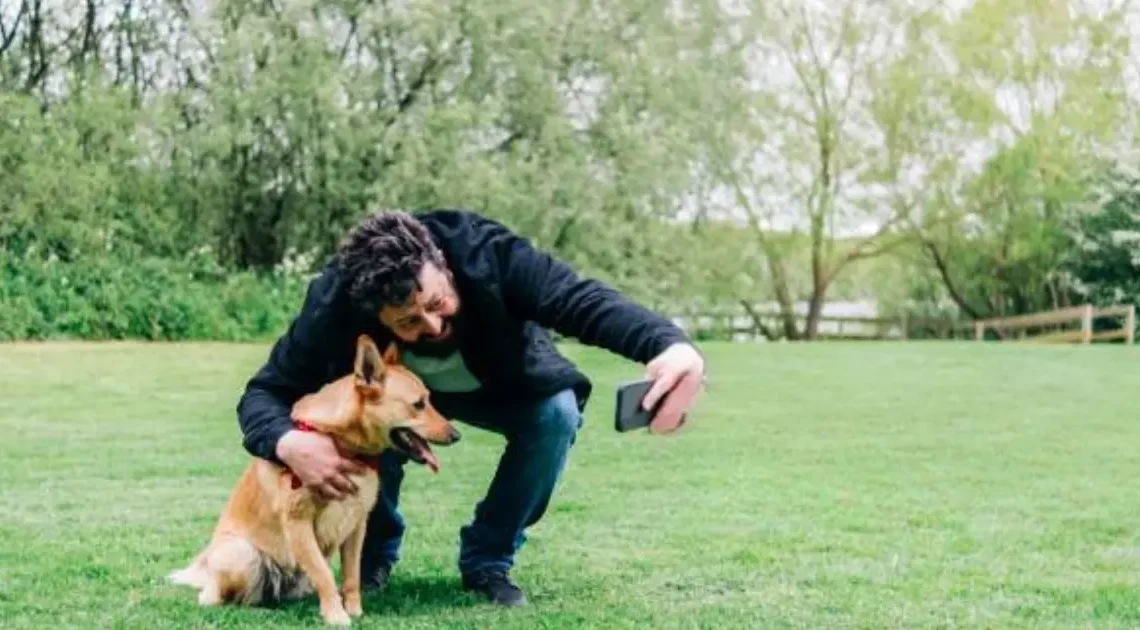
Take the “Is My Dog Special Needs Quiz” – Assess Your Dog’s Health and Behavioral Needs
When we talk about a special needs dog, we’re referring to a dog with physical or mental conditions that require extra care, attention, or treatment. These dogs may struggle with mobility, have chronic health issues, or display behavioral problems that need tailored care.
Special needs could be obvious—like a dog with a disability—or more subtle, like anxiety or a condition that affects their behavior. It’s not always easy to spot these signs at first. Some dogs may act fine in everyday situations but struggle with specific tasks or experiences.
Why is identifying special needs in dogs early important?
Catching these issues early makes a world of difference. Early intervention means your dog gets the right treatment, and you can adjust their environment to make their life easier. Think of it as a quality-of-life booster. Whether it’s managing pain or modifying their routine, knowing what’s going on lets you give them the best care possible and avoid further complications.
Recognizing special needs early also helps you prevent unnecessary frustration for both you and your dog. It can also save you money by addressing potential issues before they become bigger, costlier problems. Most importantly, early detection can improve their life expectancy and happiness.
Common Signs of Special Needs in Dogs
When it comes to special needs dogs, the signs can vary. Some are physical, others behavioral. Knowing the difference between a typical dog behavior and a special needs issue can be tricky. Let’s break it down.
What are the most common physical and behavioral signs of special needs in dogs?
- Physical Signs:
- Limping or difficulty moving: If your dog is suddenly limping or has trouble getting up, it might be a sign of arthritis, hip dysplasia, or another joint issue.
- Changes in eating/drinking habits: If your dog isn’t eating as much or is drinking excessively, it could point to health conditions like diabetes, kidney issues, or dental problems.
- Unexplained weight loss or gain: Rapid changes in weight can be a sign of an underlying medical condition, such as thyroid problems or gastrointestinal disorders.
- Vision or hearing loss: If your dog seems disoriented, bumps into things, or doesn’t respond to sounds they usually would, they could be losing their sight or hearing.
- Limping or difficulty moving: If your dog is suddenly limping or has trouble getting up, it might be a sign of arthritis, hip dysplasia, or another joint issue.
- Behavioral Signs:
- Aggression or anxiety: Special needs dogs may experience anxiety, which can lead to aggressive behaviors or constant barking.
- Difficulty learning or focusing: If your dog is suddenly less responsive to training or seems easily distracted, it could be a sign of cognitive dysfunction or neurological problems.
- Increased irritability or confusion: Older dogs, especially those with cognitive dysfunction, might show signs of confusion, like staring at walls, forgetting their routine, or seeming lost.
- Aggression or anxiety: Special needs dogs may experience anxiety, which can lead to aggressive behaviors or constant barking.
How can you differentiate between normal behavior and signs of special needs?
- Temporary vs. Ongoing Issues: Is the behavior a one-time thing, or has it been happening regularly? A temporary issue, like a sprained leg, will improve with rest. But if the problem persists, it could be related to a special need.
- Age-Related Changes: Some behaviors, like slower movement, can be age-related. However, if the signs are more severe (e.g., not being able to stand up at all), it’s worth investigating further.
- Context Matters: Consider any recent changes in your dog’s environment or routine. If they’re acting strange after a stressful situation, like moving homes or a new pet, it could be stress. But if they seem uncomfortable or in pain, it might be a deeper health issue.
Pay attention to patterns. A few odd behaviors here and there may not be a big deal. But a combination of symptoms—especially if they’re getting worse—could indicate your dog needs special care.
Is Your Dog Showing Signs of Special Needs?
If you’re noticing changes in your dog’s behavior or health, it might be more than just a phase. Special needs dogs require extra attention, and early signs can sometimes be subtle. So, how do you know if your dog is struggling?
What are the most common health issues in special needs dogs?
There are a few health problems that are pretty common in special needs dogs, and some are easier to spot than others:
Arthritis & Joint Issues: If your dog is limping or hesitating to jump, climb stairs, or go for walks, it could be joint pain or arthritis. Older dogs are more likely to deal with this.
Chronic Conditions: Things like diabetes, heart disease, or kidney issues can sneak up over time. If your dog’s drinking or urinating more than usual, or losing weight unexpectedly, it’s worth checking with a vet.
Neurological Conditions: Dogs with neurological issues may show signs like confusion, loss of coordination, or even seizures. These are serious signs that shouldn’t be ignored.
Vision or Hearing Loss: If your dog seems disoriented or doesn’t react to loud sounds, it might be struggling with its sight or hearing.
How can you tell if your dog has difficulty with mobility or coordination?
Difficulty Moving Around: If your dog is suddenly struggling to get up, or you notice stiffness when it walks, it could be dealing with arthritis or other mobility issues.
Imbalance: If your dog frequently falls, wobbles, or seems to be walking in circles, it might have neurological issues or vestibular disease.
Reduced Activity: If your dog’s enthusiasm for walks or playtime drops dramatically, it might be too painful or exhausting for them to engage.
Are sudden behavioral changes a sign of a special needs dog?
Yes, behavioral changes can definitely indicate that something’s wrong. Some signs to watch for:
Increased Anxiety or Aggression: Dogs dealing with pain or confusion may react aggressively or show signs of anxiety they didn’t have before.
Inability to Focus: If your dog seems distracted or disoriented, it could be a cognitive dysfunction or a more serious neurological problem.
Changes in Eating/Drinking: Sudden loss of appetite or increased thirst could point to conditions like diabetes or kidney disease, which affect behavior
Read here:
How to Build Confidence in a Dog: Simple Tips for Success
Is Your Dog Special Needs? Take Our Quiz!
Next Steps: What to Do If You Suspect Your Dog Has Special Needs?
If you’re noticing concerning changes in your dog’s behavior, health, or mobility, it’s important to take the next steps seriously. Here’s what to do if you suspect your dog might have special needs:
When Should You Consult a Veterinarian for Further Diagnosis?
- Behavior or Mobility Changes: If your dog is suddenly limping, having trouble getting up, or seems confused, it’s time to visit the vet.
- Sudden Weight Changes or Excessive Thirst: Unexplained weight loss or increased thirst could be a sign of diabetes or other health conditions that require professional attention.
- Loss of Appetite or Difficulty Eating: If your dog isn’t eating or drinking, this can point to something more serious—possibly even a dental issue, gastrointestinal problem, or systemic disease.
Essentially, if your dog’s behavior or physical condition changes suddenly, or if symptoms persist for more than a few days, it’s always best to consult a vet.
What Diagnostic Tests Might Your Veterinarian Recommend?
Your vet might suggest several tests depending on your dog’s symptoms. Common ones include:
- Blood Tests: To check for infections, organ function (like kidney or liver), and conditions such as diabetes.
- X-rays or Ultrasounds: To look for bone issues (like arthritis) or internal organ problems.
- Cognitive Function Tests: If your dog is showing signs of confusion or disorientation, a test for Canine Cognitive Dysfunction (CCD) might be recommended.
- Joint Assessments: If mobility is an issue, your vet might assess joints for arthritis, dysplasia, or other orthopedic problems.
- Hearing and Vision Tests: These can be performed if your dog is showing signs of blindness or deafness.
Each of these tests can help determine if there’s an underlying condition affecting your dog’s health or behavior.
What Are the Immediate Adjustments You Can Make to Accommodate Your Dog’s Needs?
While waiting for a diagnosis or treatment plan, there are a few changes you can make to improve your dog’s quality of life:
Comfortable Bedding: If your dog is dealing with joint pain or arthritis, make sure they have a soft, supportive bed to ease their discomfort.
Modified Diet: If your dog is overweight, a special diet may help with weight management, particularly if they have joint problems or diabetes.
Create a Safe Environment: If your dog’s vision or mobility is compromised, remove obstacles and provide ramps or steps for easier access to their favorite spots.
Mental Stimulation: For dogs with cognitive issues, consider providing interactive toys or puzzle feeders to keep their mind sharp.
Exercise Adjustments: Tailor exercise routines to your dog’s abilities. Shorter, more frequent walks can be easier on a dog with mobility issues.
Supporting a Special Needs Dog Long-Term
Caring for a special needs dog is a long-term commitment that requires dedication, patience, and a proactive approach. While there are challenges, the rewards of giving your dog the best life possible are immeasurable. Here’s how you can support your dog over the long haul:
What Are the Challenges and Long-Term Strategies for Caring for a Special Needs Dog?
Health Monitoring and Frequent Vet Visits:
Challenge: As your dog ages or their condition progresses, regular check-ups become essential to monitor their health. Some conditions, like arthritis or cognitive dysfunction, may require ongoing management.
Strategy: Stay on top of vet appointments, follow prescribed treatment plans, and don’t hesitate to ask your vet for updates on any new treatments or therapies that could benefit your dog.
Managing Pain and Discomfort:
Challenge: Chronic pain from conditions like arthritis, hip dysplasia, or neurological issues can make daily life harder for your dog.
Strategy: Work closely with your vet to find effective pain management solutions. This could include medications, physical therapy, supplements, or alternative treatments like acupuncture. Adjust their environment (e.g., non-slip mats, supportive bedding) to reduce discomfort.
Behavioral Issues:
Challenge: Special needs dogs may develop anxiety, depression, or aggression, particularly if they’re experiencing discomfort or cognitive decline.
Strategy: Keep routines consistent to reduce confusion. You may also need to invest in calming products like anti-anxiety collars or pheromone diffusers. Training and mental stimulation are essential for keeping their mind sharp and reducing frustration.
Adapting to Changing Needs:
Challenge: Your dog’s needs may evolve as their condition progresses. Mobility aids, dietary changes, or increased medical care might become necessary as they age or their condition worsens.
Strategy: Stay flexible and proactive, adjusting their care plan as their needs change. Research new tools and treatments that could improve their quality of life. Be patient as you make these adjustments.
Conclusion: Is Your Dog Special Needs?
So, is your dog showing signs of special needs? It’s not always easy to tell. However, there are clear indicators, from mobility issues to changes in behavior, that might suggest something’s not quite right. The most important thing is to act early and get them checked by a veterinarian.
Here’s a quick rundown on what to do:
- Observe: Watch for changes in behavior, mobility, eating habits, and mood. These are key clues.
- Consult a Vet: If you notice persistent changes, it’s time to get a professional evaluation. Blood tests, X-rays, and other diagnostic tools will help your vet pinpoint the problem.
- Adjust Care: Special needs dogs often require modifications in their routine, environment, and diet. Make sure their life is as comfortable as possible.
The Bottom Line:
A special needs dog may require extra attention, but with the right care, they can still lead a happy, fulfilling life. Patience, adjustments, and early intervention are essential in ensuring they live their best life. Whether it’s mobility aids or simply more attention, your love and care make all the difference.
So, if you’re unsure, it’s always worth investigating further. Better safe than sorry—and your dog will thank you for it!
📚 Sources
- American Veterinary Medical Association (AVMA) – General pet health guidelines
👉 https://www.avma.org/resources/pet-owners/petcare - PetMD – Health symptoms and advice for dogs with special needs
👉 https://www.petmd.com - ASPCA – Resources on special needs and behavior in dogs
👉 https://www.aspca.org/pet-care - American Kennel Club (AKC) – Special needs dog care and breed-specific issues
👉 https://www.akc.org - The Humane Society – Special needs pets and adoption tips
👉 https://www.humanesociety.org/resources/special-needs-pets - Journal of Veterinary Behavior – Studies on canine cognitive dysfunction and behavioral issues in older dogs
(Summarized from peer-reviewed publications on canine health and behavior)
👉 https://www.journals.elsevier.com/journal-of-veterinary-behavior-clinical-applications-and-research


